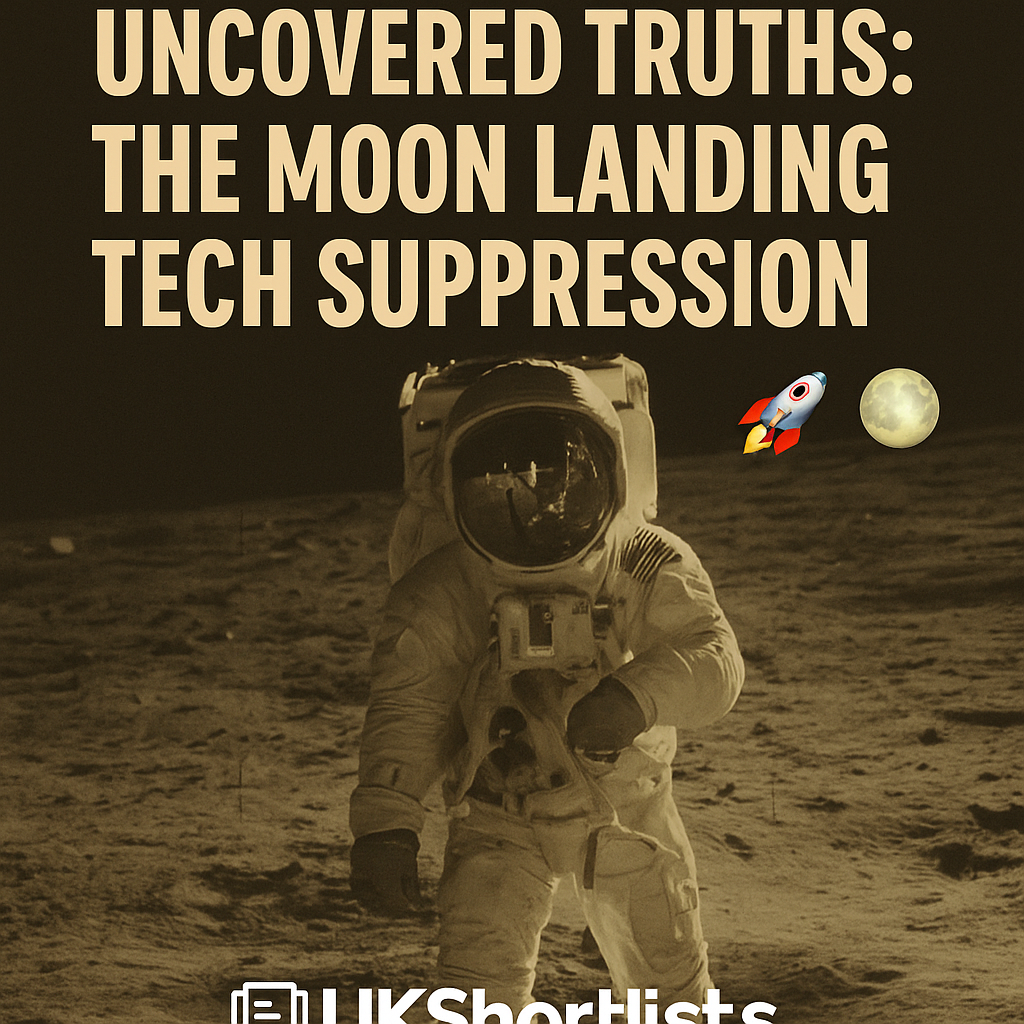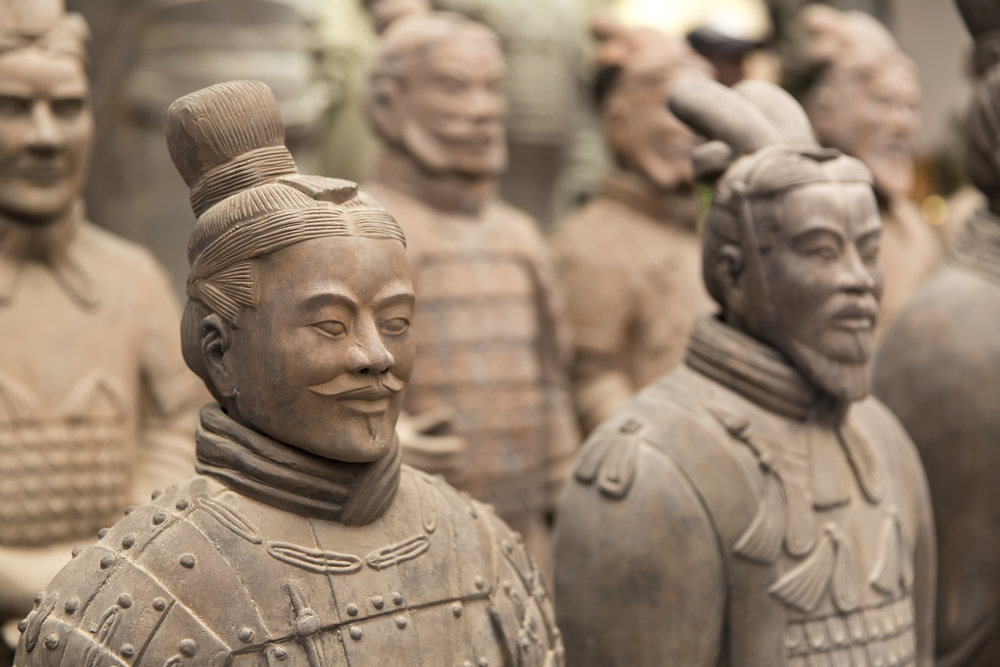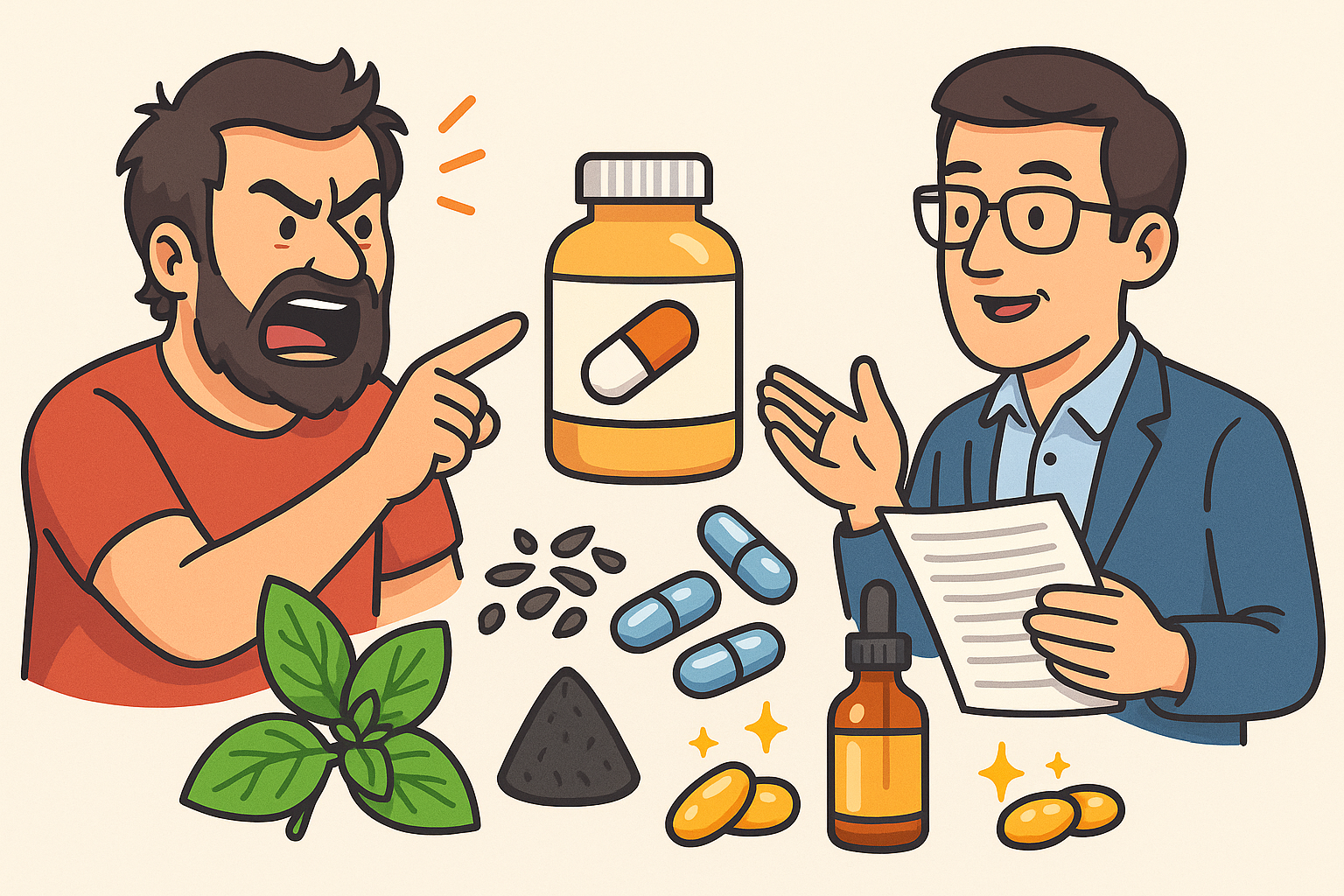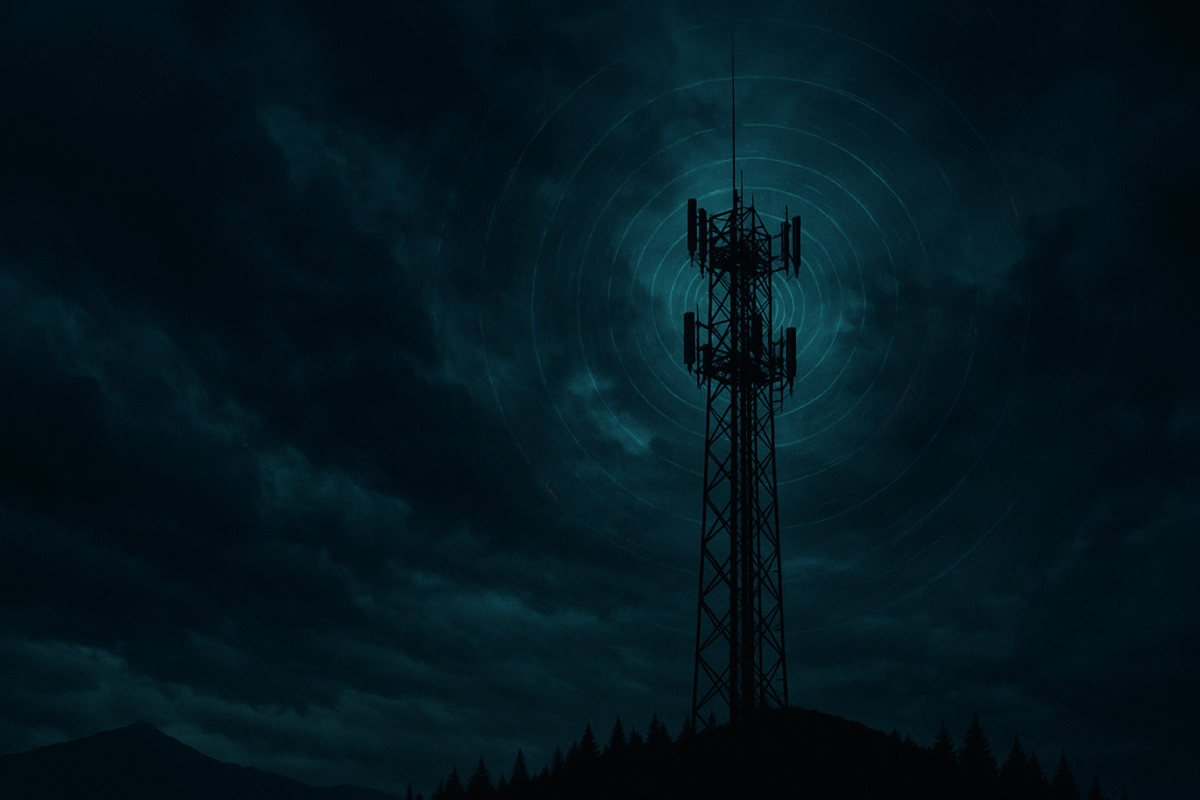Natural Remedies vs Big Pharma
Dave: “Listen, Steve – I’m done with Big Pharma’s daylight robbery. They jack up prices on everything, even on stuff you could easily get from nature. Why pay for expensive pills when simple extracts like oregano oil or black seed oil can cool inflammation and ease joint pain?”
Steve: “Slow down, Dave. Oregano oil and black seed have some evidence, sure. For example, oregano’s active compounds are known antioxidants and anti-inflammatories pmc.ncbi.nlm.nih.gov. And a small trial (40 people) found adding Nigella sativa (black seed) to rheumatoid arthritis treatment improved symptoms pmc.ncbi.nlm.nih.gov. But larger experts warn these are preliminary findings – not a medical license to ditch proven treatments health.clevelandclinic.org.”
Dave: “But look at those supplement companies – markups are insane. We could grow our own herbs! Pharma’s just gating off nature.”
Steve: “I get it. Natural doesn’t cost patent fees. But even if oregano oil fights inflammation in lab studies pmc.ncbi.nlm.nih.gov, translating that to human health isn’t guaranteed. And Cleveland Clinic notes the evidence for black seed is tiny: that 42-person arthritis study was more of a hint than proof health.clevelandclinic.org. Plus they stress: these oils should only adjunct conventional therapy, not replace it health.clevelandclinic.org.”
Dave (grinning): “Still, stuff like that makes you wonder why a cough syrup costs £10 but a kilo of thyme is pocket change!”
Steve: “True, medicine pricing is insane. But price isn’t the same as efficacy. We should focus on evidence. Speaking of which, let’s talk the minerals you love – like magnesium and zinc.”
Magnesium, Zinc & Friends: The Mighty Mineral Mix
Dave: “Exactly! Magnesium in forms like citrate or glycinate is cheap and available. Folks say it helps with sleep, muscle cramps, mood… and it’s pennies compared to a pharmacist’s formula.”
Steve: “Some studies do show benefit. One RCT gave older adults 500 mg magnesium daily and found better sleep time and efficiency, longer sleep and less waking up, plus higher melatonin pmc.ncbi.nlm.nih.gov. Another analysis even found magnesium modestly lowered depression scores frontiersin.org. But don’t oversell it – the effects are real but modest, and high doses often cause loose stools. And on cramps, the evidence is weak: a Cochrane review concluded magnesium likely doesn’t meaningfully prevent leg cramps in most people pubmed.ncbi.nlm.nih.gov.”
Dave: “So you’re saying it’s not a miracle cure, but still helpful?”
Steve: “Yes – more like a nudge than a revolution. Now zinc is another essential. It’s true zinc deficiency can affect immunity and mood. In one trial, 30 mg zinc daily for 10 weeks significantly improved depression and anxiety scores in elderly patients openpublichealthjournal.com. And meta-analyses suggest zinc lozenges can shave a couple of days off a cold pmc.ncbi.nlm.nih.gov. But again, take care: excess zinc can cause nausea, and too much zinc without copper can lower copper levels. Copper’s a minor player, really – most people get enough from diet. Actually, high copper levels have been linked to depression risk bmcpsychiatry.biomedcentral.com, so it’s not a “more is better” situation. Balance is key.”
Dave: “Alright Mr. History Detective, but calcium and vitamin D3 are obviously cheap naturals – basically sunlight and milkbones.”
Steve: *“Right, calcium and D3 are classic bone-health champs. NIH explains calcium builds bones and teeth, and vitamin D helps absorb calcium niams.nih.gov. However, ‘more’ isn’t always better. A large JAMA trial found mega-doses of D3 (10,000 IU/day) gave no extra bone benefit and may even slightly harm bone density compared to a modest 400 IU health.harvard.edu. So supplementing can help if you’re deficient or elderly, but wildly high doses aren’t magic.
And vitamin K2 (often paired with D3) has intriguing data: in the Rotterdam Study, folks with higher dietary K2 had less arterial calcification and far lower heart disease risk pubmed.ncbi.nlm.nih.gov. That suggests D3+K2 makes sense for calcium to go to bones, not arteries. But these are observational findings, not prescriptions. Bottom line: vitamins D3, K2, calcium are valuable, but dosing and balance matter. Always check actual dietary intake and blood levels before piling on pills.”*
Sleep & Stress Helpers: L-Theanine, Shilajit… and More
Dave: “You can’t deny it – green tea’s amino acid L-theanine is practically free (as tea) but sold like gold in capsules. People swear it calms nerves and helps sleep.”
Steve: “It does have a good reputation. In a Japanese RCT, 200 mg L-theanine daily reduced self-reported anxiety and depression scores and improved sleep quality in healthy adults pmc.ncbi.nlm.nih.gov. Specifically, subjects fell asleep faster and woke less oftenpmc.ncbi.nlm.nih.gov. So yes, L-theanine is a promising mild relaxant. And it’s cheap if you prefer the tea route.”
Dave: “And shilajit? This ancient “miracle resin” is trending among biohackers as a general vitality tonic.”
Steve: “Shilajit is interesting. One 2012 review gushes that it’s a ‘potent and very safe’ supplement that may restore energy balance and even help age-related cognitive issues pubmed.ncbi.nlm.nih.gov. It highlights fulvic acid (a component of shilajit) as blocking tau aggregation in Alzheimer’s research. But remember, those are early lab findings. Clinical trials are still lacking. In essence, shilajit looks safe and has potential anti-aging benefits, but we need more human data pubmed.ncbi.nlm.nih.gov.”
Dave (smirking): “So even the ‘resin’ has fans. You science guys say everything’s potentially good. But hey, at least it’s not spiked with corporate logos.”
Hidden Gems: Bacopa, Lion’s Mane & Other Underdogs
Steve: “There are plenty more ‘under-the-radar’ naturals worth mentioning. Take Bacopa monnieri, an herb. In an elderly trial, Bacopa improved memory recall and lowered depression and anxiety scores versus place bopmc.ncbi.nlm.nih.gov. Lion’s Mane mushroom is another: a pilot study found 1.8 g daily boosted cognitive speed (faster reaction on tasks) and even trended toward reduced stress pubmed.ncbi.nlm.nih.gov. Ashwagandha (Withania) is well-known in Ayurveda; RCTs have found 240 mg daily reduced anxiety scores and cortisol levels significantly pmc.ncbi.nlm.nih.gov. These adaptogens show real promise.”
Dave: “See? Nature keeps giving us stuff and pharma just siphons it. I bet the big guys are pissed we’re onto all this free research.”
Steve: “Well, to be fair, many of these natural compounds did come from research labs originally. But anyways, we should add caution: none of these are miracle cures, and effects can be modest. Still, it’s great there’s growing science on them. People just need to stay practical.”
Supplement Picks (Amazon UK Affiliate Links*)
For those who want to try, here are some friendly picks at different price points (Amazon UK, affiliates):
Daily Wellbeing Stack Picks (UK Affiliate Links*)
Looking for a one-stop daily stack? Here are some multi-ingredient picks designed for general health:
Prices and availability may vary. All product links are Amazon UK affiliate links. We may earn a commission (at no extra cost to you) if you buy through them.
Not Medical Advice: This friendly debate is for informational purposes only and not a substitute for professional healthcare. Always consult a qualified practitioner before changing your supplement routine.





